Using the Sorting and Filtering tools make your Access records and databases more organized and easy to understand, especially if you want to make sense of the data at first glance when you open your database file. In this tutorial, we will explain the difference between Sorting and Filtering data and how to Sort and filter records in Access.
What is the difference between Sorting & Filtering in Access?
Sorting will allow the user to put data in ascending or descending order while Filtering separates important records from unimportant records; when data is filtered, only rows that meet the filter criteria will display, and other rows will be hidden.
What are the advantages of sorting and filtering data in Access?
The benefits of sorting and filtering data in an Access database are that they provide systematic representation and also give you a better understanding of your data. If you need to check data in descending or ascending order, you can sort or filter data as per your requirements.
How to Sort and Filter Records in Microsoft Access
1] Sorting Records in Access
Select the field you want to sort, for instance, the FirstName of our Students.
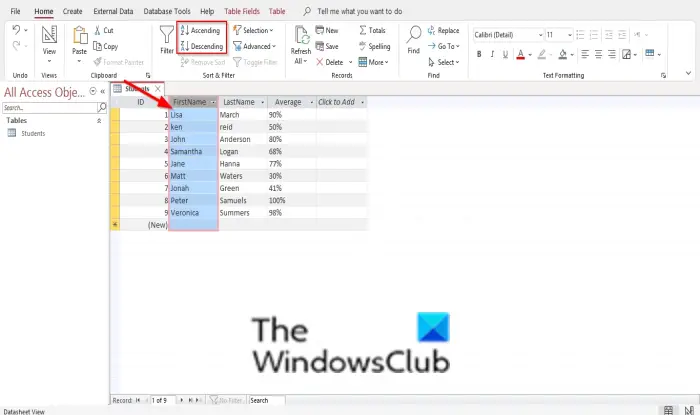
Click the Home tab and locate the Ascending and Descending buttons in the Sort and Filter group.
Select the Ascending button to sort the names from A to Z or sort numbers from largest to smallest.
Select the Descending button to sort the names from Z to A or sort numbers from smallest to largest.
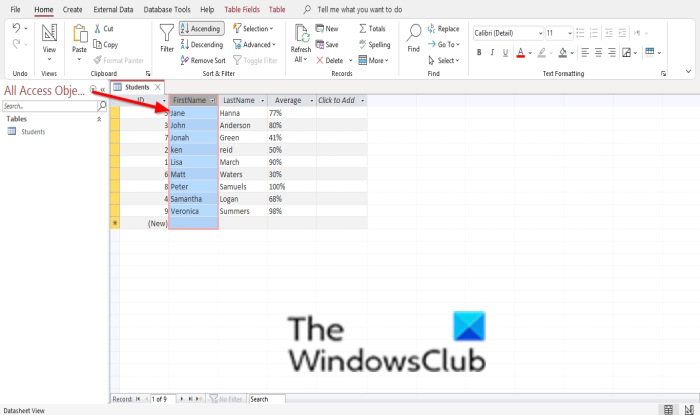
The selected field is sorted, depending on the order you have chosen.
Then click Save.
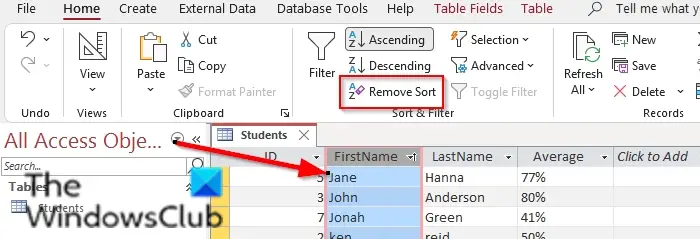
If you want to remove the Sorting order, select the field that was sorted and click Remove Sort.
Read: How to add Totals in Reports in Microsoft Access.
2] Filtering Records in Access
There are three methods you can use to filter data.
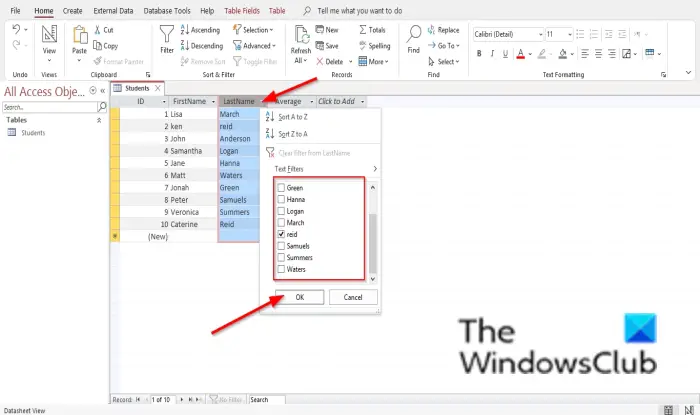
Method 1 is to click the drop-down arrow next to the field.
A drop-down checklist will open with your data in the database and some checked checkboxes.
Deselect the checkboxes you do not want to filter and select the checkboxes you want to filter.
Then click Ok.
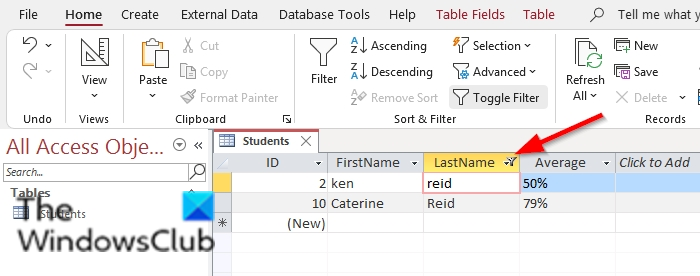
See the result in the photo above.
The second method to filter records is by using the selecting feature.

Select the cell or data you want to filter.
On the Home tab in the Sort and Filter group, click the Selection button.
In the drop-down menu click Contains which includes cells that contain the selected data.
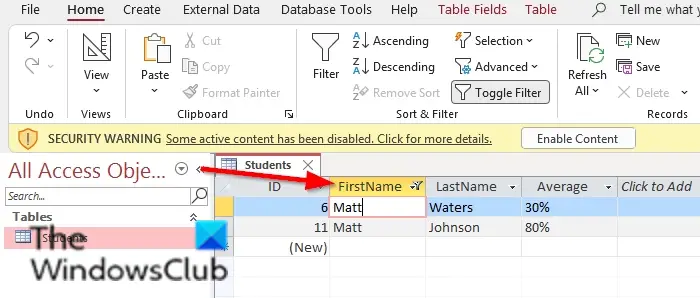
The filter is applied.
The third method is to create a filter from a search term.
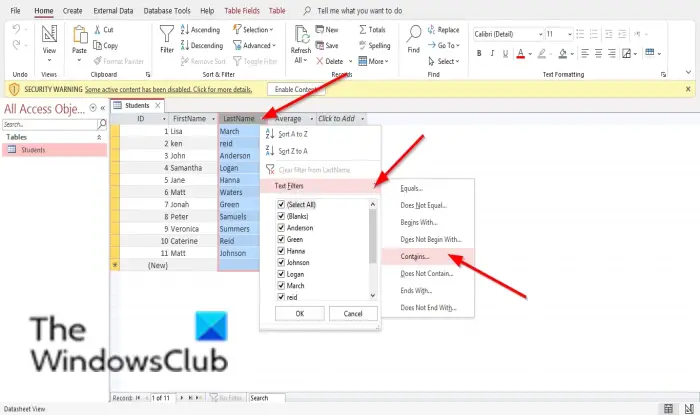
Click the drop-down arrow next to the field.
A drop-down checklist will open.
Click Text Filters then click the Contains option.

A Custom Filter dialog box will open.
In the dialog box type the text you want to filter and click OK.
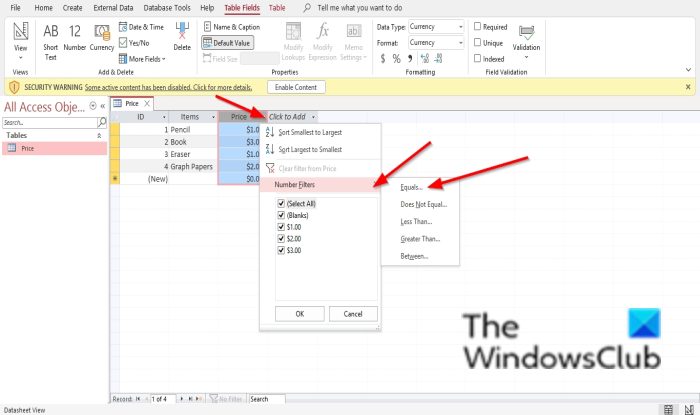
To filter numbers, click the drop-down arrow next to a field that contains numbers.
A drop-down checklist will open.
Click Number Filters then click the option that you want. For this tutorial, we selected Equals.

In the dialog box type the number you want to filter and click OK.
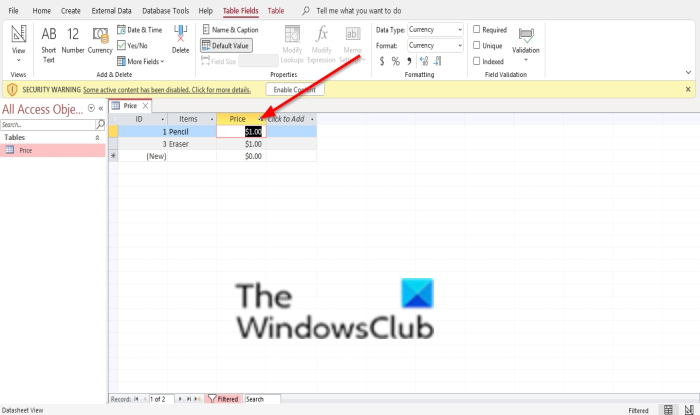
See the photo above to see the result.
We hope this tutorial helps you understand how to sort and filter records in Access; if you have questions about the tutorial, let us know in the comments.
Leave a Reply